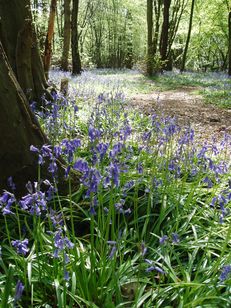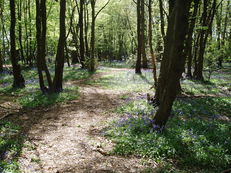Managing Existing Trees and Woodlands
Write a management plan. This should be based on a field and literature survey. See ‘Making Biodiversity Happen’. You should record:
- The site and environmental conditions – soils, drainage etc;
- The state of the wood (species, condition, size, natural regeneration, signs of past management, impacts such as browsing, standing and fallen dead wood etc);
- Key wildlife species such as birds, mammals, fungi, flowering plants, beetles, etc;
- Human use of the area;
- The history of the woodland and its past management from maps and estate records if appropriate; and
- Any designations such as Tree Preservation Orders, Sites of Special Scientific Interest etc.
Decide on your management objectives. Biodiversity and amenity (rather than the production of timber) will probably be the main purposes of woods on a campus. Depending on the character of the wood, improving biodiversity may involve:
- Selectively felling some individual trees in the canopy to encourage regeneration;
- Applying a policy of non-intervention;
- In an old wood, re-instating historical management such as coppicing or pollarding; and/or
- Introducing specific management techniques for important habitats species such as those identified in Local Biodiversity Action Plans or the statutory lists of priority species and habitats in England, Scotland, Wales and Northern Ireland.
Apply general management techniques. These will apply to virtually all woodlands being managed with a biodiversity objective.
- Remove and control invasive non-native species such as rhododendron and knotweed.
- Favour natural regeneration of trees by self-seeding or suckering.
- Don’t intervene immediately to tidy up or reverse apparent catastrophes such as storm damage or disease incidents, unless health and safety reasons demand. New biodiversity benefits may emerge from these incidents.
- Retain standing old trees and dead wood. These may be the most important habitats in the woodland.






 Except where otherwise stated, content on this site is
licensed under a Creative Commons Attribution 3.0 License.
Except where otherwise stated, content on this site is
licensed under a Creative Commons Attribution 3.0 License.
